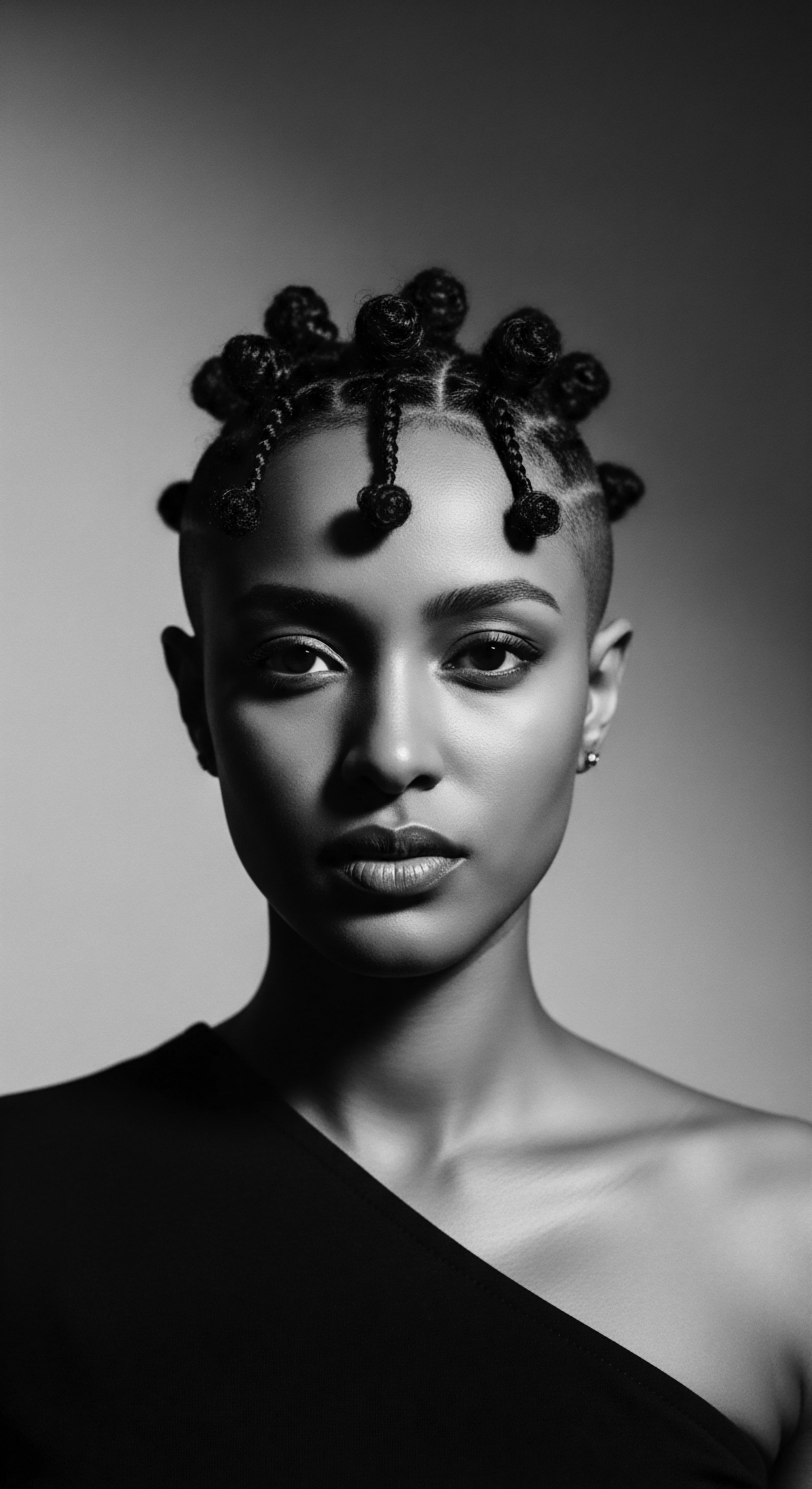
Roots
In the quiet contemplation of a coiled strand, we discover not merely a biological structure, but a vibrant archive of human spirit. Textured hair, in its myriad forms, carries within its very helix a lineage of resistance, a profound declaration against forces seeking to diminish or erase identity. This journey through the heritage of textured hair reveals how deeply its care and styling practices have interwoven with the human experience, acting as a shield, a silent language, and a banner of enduring selfhood through centuries of profound challenges. It is a story whispered through generations, yet it speaks with resonant clarity in our present.

The Hair’s Anatomy and Ancestral Echoes
To truly comprehend the resilience held within textured hair, we must first gaze upon its fundamental composition. Unlike straight hair, which tends to be circular in cross-section, Afro-textured hair often exhibits an elliptical or flat cross-sectional shape. This distinct geometry, coupled with a higher number of disulfide bonds, contributes to its characteristic curl patterns, ranging from waves to tight coils and zig-zag formations. This inherent architecture, an ancestral gift, grants it strength, elasticity, and a remarkable capacity for diverse styling.
Early African societies understood this intrinsic power, cultivating practices that honored hair as a living extension of self and community. Hair was not just an aesthetic feature; it signified tribal affiliation, social standing, age, marital status, and spiritual connections. These distinctions were painstakingly styled, cared for, and adorned, reflecting a reverence for the hair’s natural form and its place within the cosmic order. The very structure of the hair, therefore, became a canvas upon which identity was etched, a practice that would later stand in stark opposition to efforts to strip away selfhood.
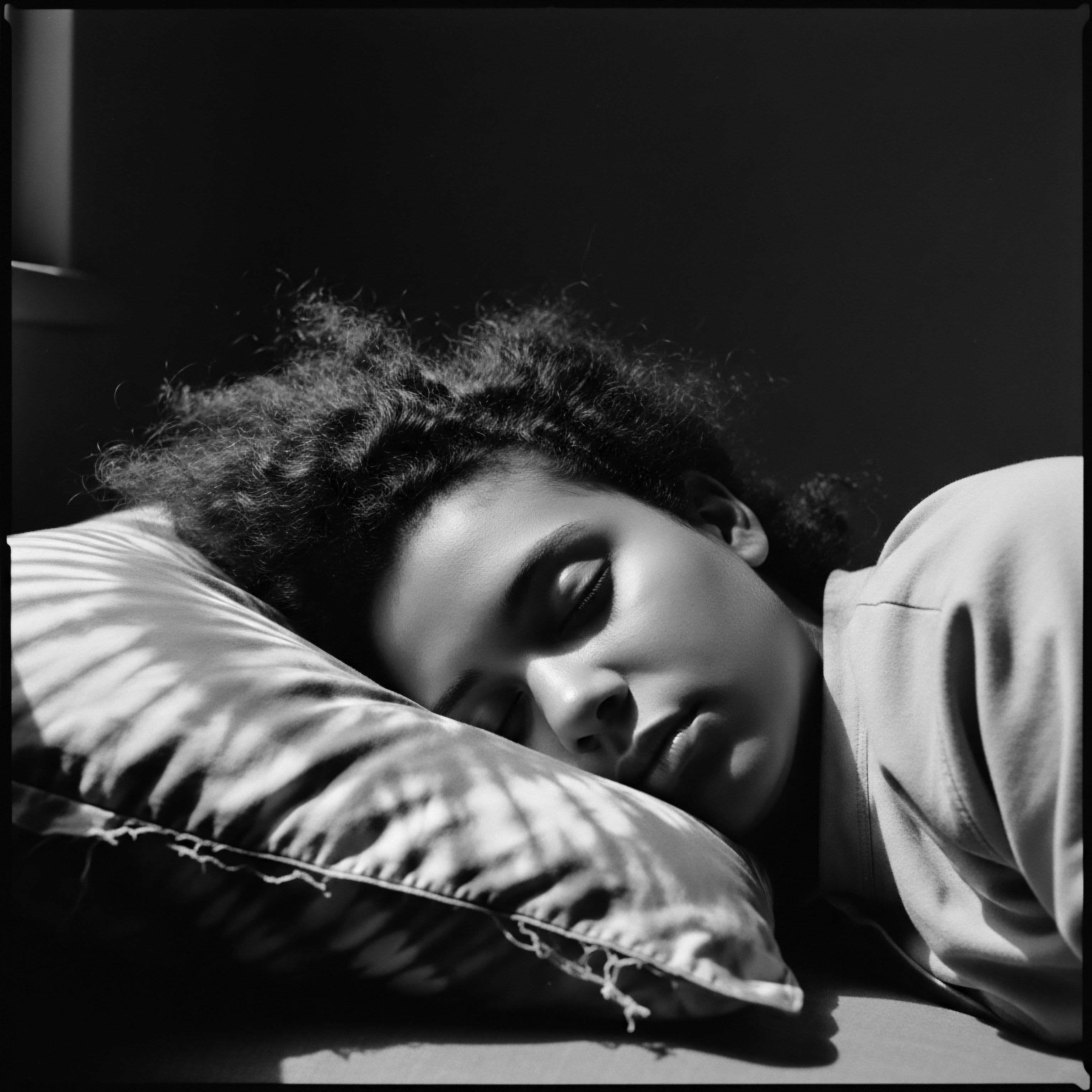
Hair Classifications and Their Hidden Meanings
Modern classification systems for textured hair, while aiming for scientific precision, often carry echoes of historical biases. Terms like “kinky” or “nappy” were once wielded as tools of dehumanization, aimed at devaluing Afro-textured hair by associating its natural texture with inferiority. Yet, within the heritage of Black and mixed-race communities, these very terms have been reclaimed, transformed into badges of pride and authentic identity. The scientific understanding of curl patterns (often categorized by numbers and letters like 3a, 4c) provides a framework, but it is the cultural context that imbues these classifications with their true meaning.
Ancestral communities did not require scientific charts to appreciate the variety of hair textures. Their understanding was organic, rooted in observation, communal care, and the deep recognition of hair as a marker of belonging. The language used within these communities for hair care and styling, steeped in oral traditions, reveals a sophisticated knowledge passed down through the hands of mothers, aunties, and elders, affirming beauty long before external validation was sought.
Textured hair, with its unique architectural complexity, served as a foundational canvas for identity and communication within ancestral communities, long before external forces sought to redefine its worth.

A Language of Strands
The vocabulary surrounding textured hair has always been rich, reflecting both its biological nuances and its profound cultural weight. Historically, specific styles carried inherent meanings, conveying messages about a person’s life stage, social role, or spiritual beliefs. During periods of enslavement and colonialism, this lexicon became a crucial tool of survival. The forced shaving of heads upon arrival in the Americas, a brutal act of dehumanization and cultural stripping, aimed to sever these connections to ancestral practices and identity.
Yet, the memory persisted. Enslaved Africans, denied their traditional tools and time for elaborate care, resorted to ingenious methods, using whatever was at hand – often a piece of cloth for wrapping or even animal fats for moisture (University of Salford Students’ Union, 2024). This resourcefulness laid the groundwork for new traditions, adapting ancient wisdom to new, harsh realities. The resistance was often silent, a quiet affirmation of self in the face of relentless assault on dignity.

Ritual
The hands that braid, twist, and adorn textured hair are not merely performing a physical act; they are engaging in a sacred ritual, one that has, for centuries, served as a powerful act of defiance. From the earliest days of documented African history to the vibrant present, styling textured hair has been a living, breathing testament to cultural continuity and a profound refusal to surrender to external pressures. These practices, passed through generations, have built resilience, nurtured community, and boldly proclaimed identity against the backdrop of oppression.
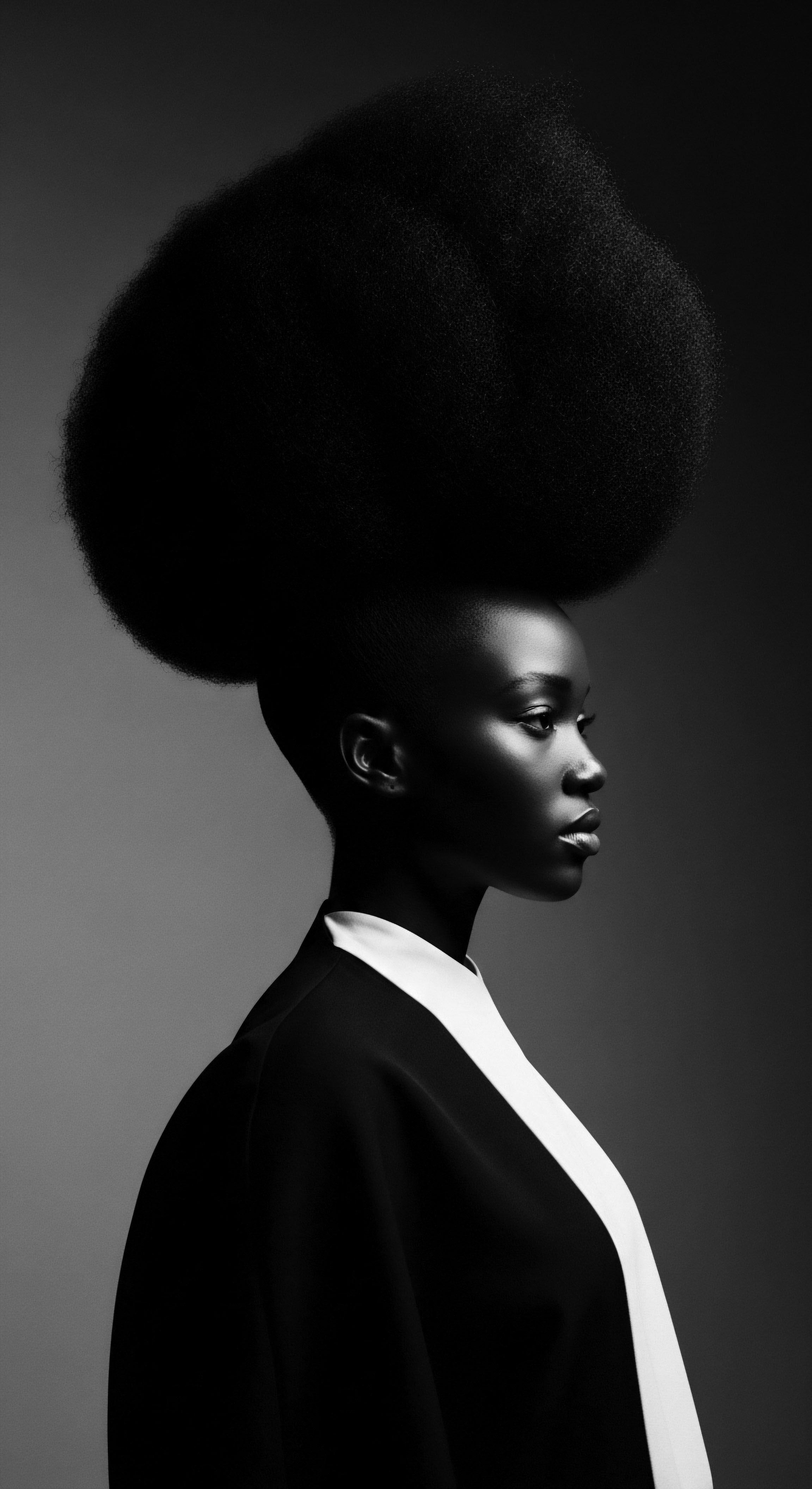
Protective Styles as Living Archives
Protective styles, such as cornrows, braids, and twists, stand as enduring symbols of ingenuity and resistance. Their ancestral roots run deep, far predating the transatlantic voyage, with origins in diverse African civilizations where they communicated intricate social, marital, and spiritual information. When enslaved Africans were forcibly transported across the ocean, these styles took on a new, more urgent significance. The tightly braided rows of cornrows, in particular, became a covert communication system.
Enslaved individuals, forbidden from reading or writing, braided maps to freedom into their hair, concealing paths to waterways or escape routes, often incorporating rice seeds or gold fragments within the braids to aid survival after escape (Ancient Origins, 2022). This practice, documented through oral histories in places like Colombia, where the village of Palenque de San Basilio was founded by maroons led by Benkos Biohò, highlights the extraordinary ways hair became a tool of survival and rebellion.
Across eras of profound struggle, the hands shaping textured hair transformed into silent cartographers, weaving pathways to freedom and future generations’ heritage.
The act of creating these styles was communal, a moment for sharing stories, transferring knowledge, and reaffirming kinship in a world intent on tearing it apart. This communal care, the tender touch of fingers on scalp, reinforced bonds and preserved a sense of shared humanity. The durability of these styles also offered practical benefits, protecting the hair from the harsh conditions of labor and extreme weather, allowing for longer periods between maintenance, a luxury often denied to enslaved people.
- Cornrows ❉ Historically used as maps to freedom, concealing directions and sustenance for escape.
- Bantu Knots ❉ An ancient African style that also protected hair and could be worn for extended periods, symbolizing self-sufficiency.
- Locs ❉ A spiritual and identity-affirming style that, particularly during the Black Power Movement, became a declaration of natural beauty and defiance.

Natural Definition and the Quest for Authenticity
The techniques used to define and enhance natural textured hair, often employing simple tools and natural elements, echo ancient African grooming practices. The use of natural oils, butters like shea and cocoa, and plant-based concoctions to condition and style hair was commonplace in pre-colonial Africa. These methods, born of ancestral knowledge of the land and its resources, prioritized hair health and celebrated its inherent texture. In periods of systematic denigration, the choice to wear one’s hair in its natural state, defined by its coils and curls, became a potent act of reclamation.
The 1960s and 1970s saw a resurgence of the Afro, a style that became synonymous with the Black Power movement and the “Black is Beautiful” affirmation. Figures like Angela Davis, whose iconic Afro became a symbol of unapologetic Black identity and resistance, challenged Eurocentric beauty standards that had long dictated that straight hair was the only acceptable form (The Garfield Messenger, 2022).
| Historical Context Pre-Colonial Africa |
| Styling Practice Diverse braids, twists, adorned with shells and beads |
| Heritage Significance Communicated social status, tribal affiliation, spiritual beliefs, and beauty. |
| Historical Context Slavery and Colonialism |
| Styling Practice Cornrows as coded maps, headwraps as defiant adornment |
| Heritage Significance Covert communication, preservation of identity, subversive beauty statements against oppressive laws. |
| Historical Context Civil Rights and Black Power Movements |
| Styling Practice The Afro, natural locs, and braids |
| Heritage Significance Symbol of racial pride, self-love, and political solidarity, rejecting imposed beauty standards. |
| Historical Context Contemporary Natural Hair Movement |
| Styling Practice Wide array of natural styles, informed by ancestral and modern care |
| Heritage Significance Celebration of diversity, holistic wellness, and continued affirmation of Black identity. |
| Historical Context This table traces how textured hair practices, deeply rooted in ancestral wisdom, evolved into powerful symbols of resistance throughout history. |

Headwraps and Hidden Messages
The headwrap, a seemingly simple piece of cloth, holds a complex history as a tool of both oppression and powerful resistance. In many African societies, head coverings carried cultural meaning, signifying status or occasion. However, during the transatlantic slave trade and its aftermath, headwraps became mandated attire, often enforced to distinguish enslaved or free Black women from white women, or to hide the hair deemed “unruly.” A prime example is the Tignon Law of 1786 in Spanish colonial Louisiana, enacted by Governor Esteban Rodríguez Miró. This law compelled free women of color to cover their elaborate hairstyles with a tignon (a headscarf) in public, aiming to diminish their beauty and social standing, and to reinforce racial hierarchies (NOIR ‘N NOLA, 2019).
Yet, these women, with remarkable resilience and artistry, subverted the law’s oppressive intent. They transformed the mandated tignon into a vibrant statement of defiance. They used luxurious, colorful fabrics, tied them in elaborate, towering knots, and adorned them with feathers and jewels (New York Historical, 2023). What was meant to suppress their allure instead amplified it, making their headwraps undeniable symbols of their cultural heritage, creativity, and enduring spirit (Afrostreet, 2025).
This act of transforming a tool of subjugation into a beacon of style demonstrates a profound understanding of resistance through beauty. The headwrap today remains a potent symbol of Black identity and heritage, connecting wearers to this legacy of creative defiance.
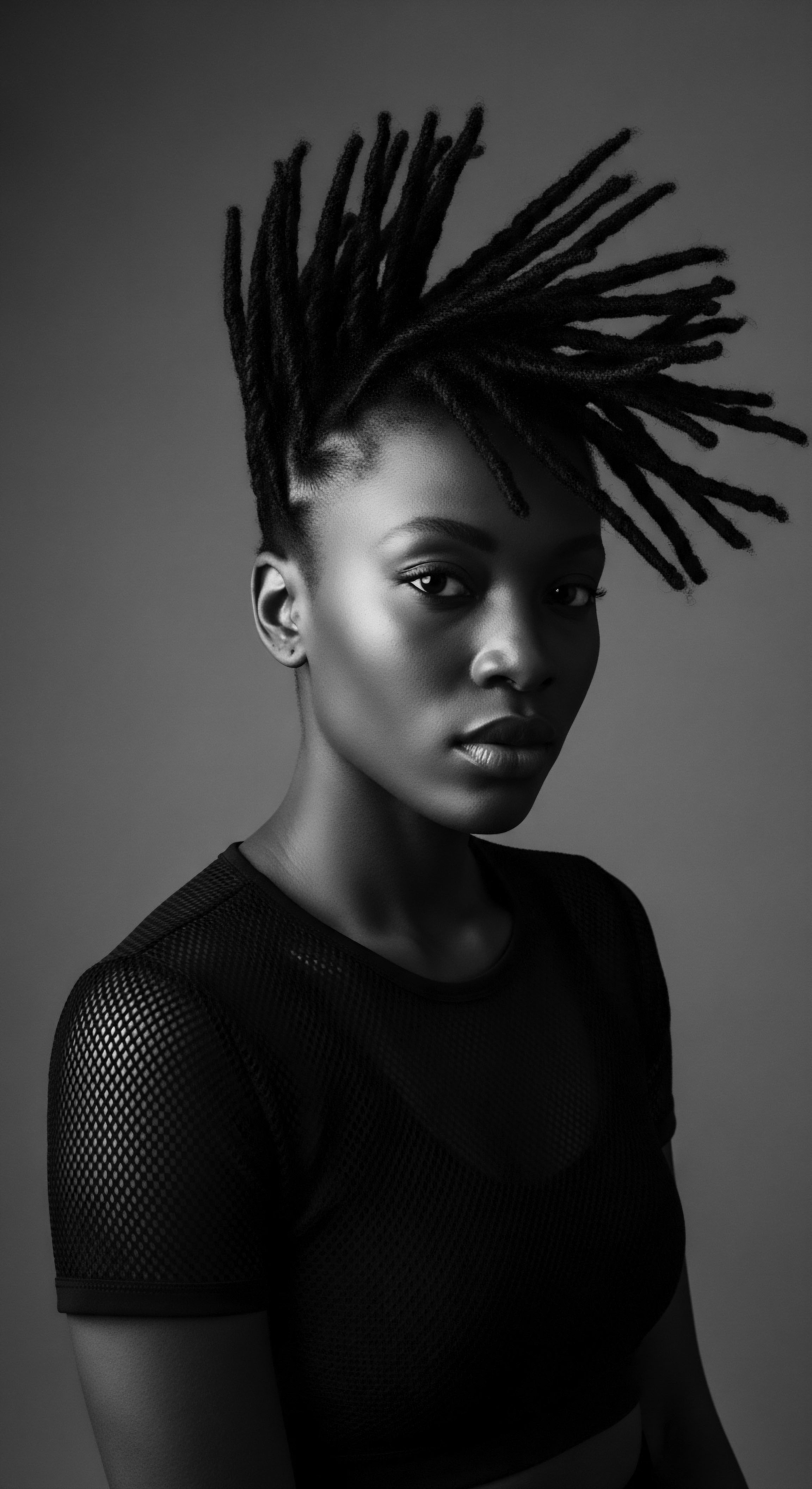
Relay
The enduring presence of textured hair practices, from ancestral wisdom to contemporary wellness, represents a continuous relay of knowledge, a living testament to self-preservation and communal strength. This deeper exploration uncovers how the daily rituals of care transformed into a profound form of resistance, challenging oppressive norms and reinforcing the sacred bond to one’s heritage.
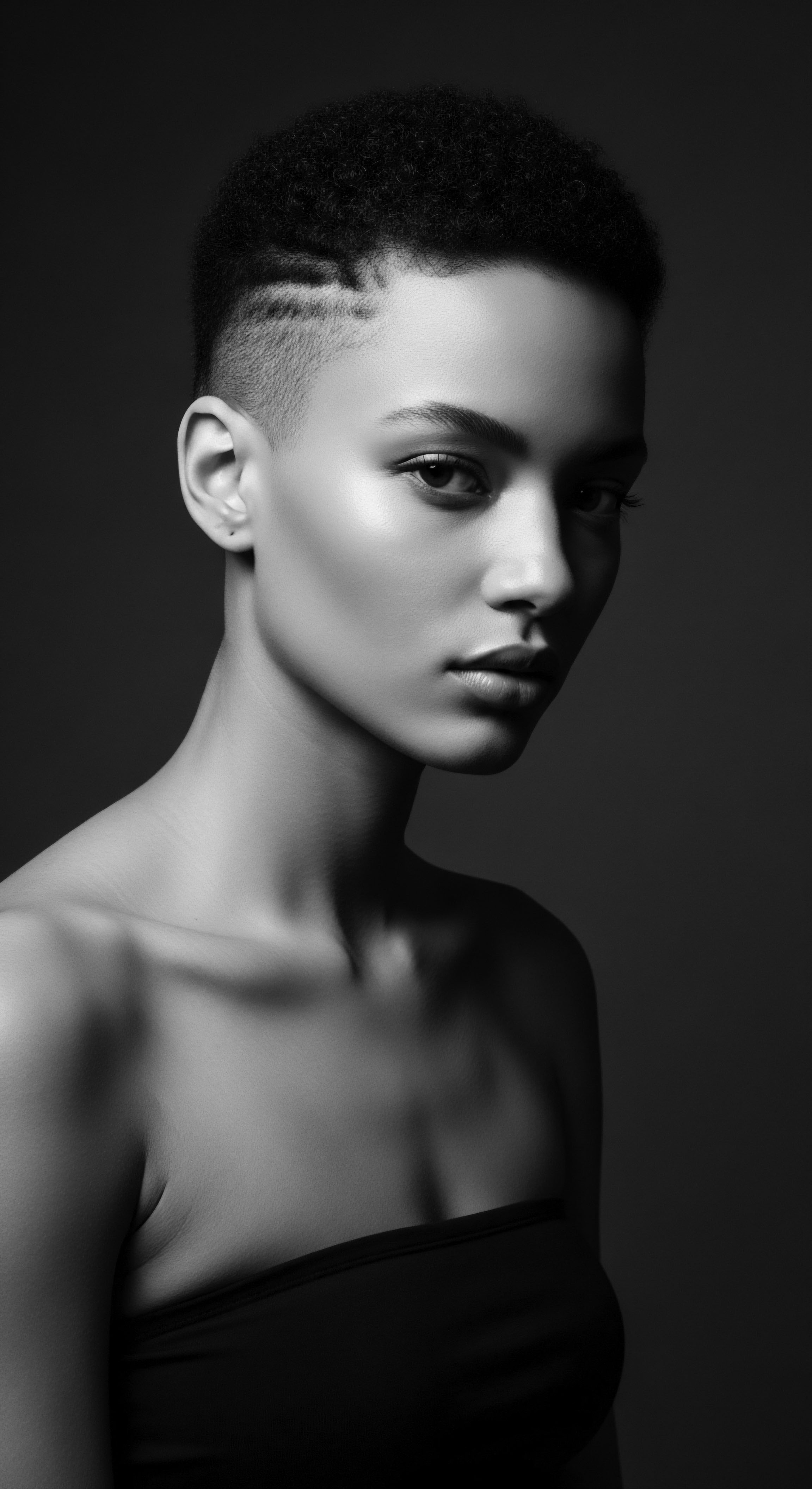
Care as Continuity
Building a personalized textured hair regimen, deeply inspired by ancestral wisdom, became an act of self-sovereignty. In many pre-colonial African societies, hair care was a collective endeavor, a time for intergenerational bonding and the transmission of knowledge about natural ingredients and techniques. Shea butter, coconut oil, aloe vera, and various indigenous plants were not merely emollients; they were gifts from the earth, used to nourish, protect, and enhance the hair’s vitality (University of Salford Students’ Union, 2024). The forced displacement of African peoples severed immediate access to these traditional resources, yet the underlying principles of holistic care persisted.
Enslaved individuals, resourceful and determined, adapted, using whatever was available on plantations to maintain hygiene and a semblance of traditional practice, even if only in secret. The preservation of these practices, however modified, was a quiet but potent act of defiance against a system designed to erase cultural memory. The very act of caring for one’s textured hair became a reaffirmation of humanity and connection to a lineage that refused to be broken.
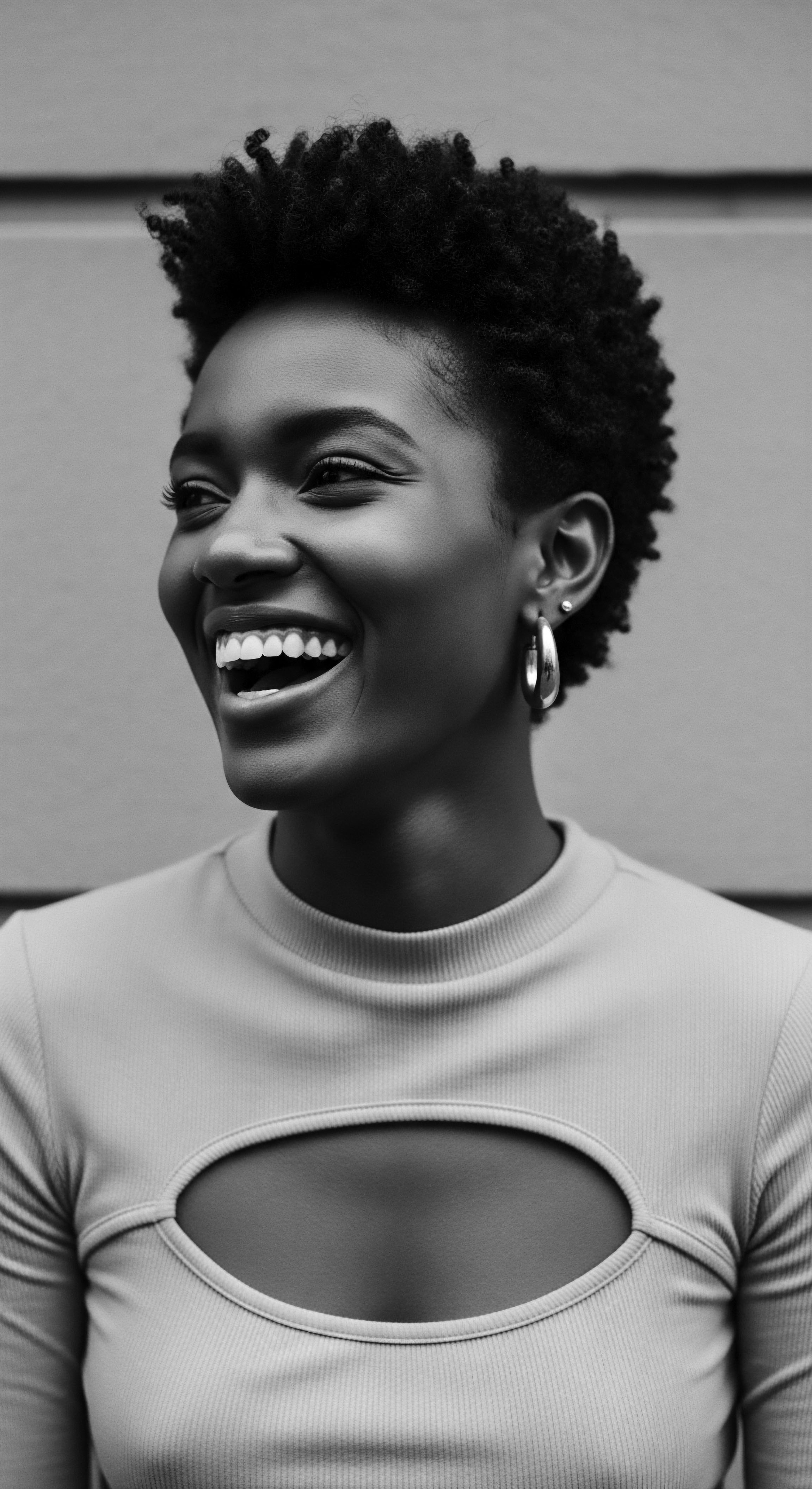
Nighttime Sanctity and Bonnet Wisdom
The simple, yet profound, act of protecting textured hair during sleep with bonnets, scarves, or wraps, holds a historical basis rooted in both necessity and cultural preservation. Historically, after periods of arduous labor, enslaved women used rags and scraps of fabric to cover their hair, shielding it from debris and maintaining what little moisture and neatness was possible. This practice, initially born of harsh conditions, evolved into a vital ritual for hair health and preservation, guarding against tangles, breakage, and moisture loss. Later, during the post-emancipation era and the Great Migration, as Black women sought to assimilate into Eurocentric beauty standards by chemically straightening their hair, the bonnet became crucial for preserving these manipulated styles.
Yet, even as external pressures mounted, the act of wrapping one’s hair at night also represented an intimate, private moment of self-care and cultural continuity. It was a practice passed from mother to daughter, a quiet wisdom affirming the value of one’s hair, regardless of societal devaluation. Today, the silk or satin bonnet stands as an emblem of self-respect, a testament to ancestral care, and a celebration of textured hair’s unique needs, connecting contemporary practices to a rich historical legacy.
This enduring practice speaks volumes about the pragmatic yet deeply symbolic ways that textured hair practices served as resistance. The bonnet, a ubiquitous item in many Black households, embodies centuries of adaptive innovation and self-preservation. It shields fragile strands from friction, preserves intricate styles, and seals in precious moisture, allowing hair to thrive despite historical and ongoing challenges. The continued use of such accessories is a living link to those who found ways to care for their hair and spirits under unimaginable duress, demonstrating that even the most intimate routines can be acts of defiance and continuity.

Understanding Textured Hair’s Resilience Through Science?
Modern science, through the study of hair anatomy and physiology, helps validate the efficacy of many long-standing traditional care practices. The unique helical structure of textured hair means its outer cuticle layer is more exposed, making it naturally prone to dryness and breakage without proper care. This scientific understanding illuminates why traditional remedies, rich in humectants and emollients, were so vital.
For instance, the traditional use of shea butter (Butyrospermum parkii) across West Africa, known for its fatty acid profile, offers a protective barrier and deep moisturization that modern science now confirms as crucial for textured hair health. The continuous scientific exploration of ingredients and their benefits often echoes or explains the ancestral wisdom regarding plant properties and their applications.
Consider the case of the Tignon Laws in 18th-century Louisiana. Enacted in 1786 by Spanish Governor Esteban Rodríguez Miró, these laws were explicitly designed to enforce social hierarchies by compelling free women of color to cover their hair with a tignon (a headscarf). The underlying motivation was to diminish their allure and perceived social competition with white women, who found these women’s elaborate hairstyles and attractiveness threatening (The Tignon Laws ❉ How Black Women in Louisiana Turned Oppression into Fashion, 2025). However, what began as an act of oppression was creatively subverted.
These women, with remarkable resilience and artistry, transformed the mandated headwear into a statement of unparalleled style and defiance. They used luxurious fabrics—silks and satins in vibrant colors—and tied them in complex, elevated arrangements, often adorned with feathers and jewels, thereby making them even more eye-catching and beautiful (The Tignon Laws, 2018). This historical episode powerfully illustrates how a practice intended to subjugate became a profound act of resistance, leveraging beauty and cultural expression to assert dignity and identity in the face of restrictive decrees. The Tignon Law, in its attempt to humble, instead served to highlight the indomitable spirit and creative genius of Black women, solidifying the headwrap as a enduring symbol of their enduring heritage and defiant self-expression.

Holistic Wellness and Hair’s Deeper Connections
The journey of textured hair care transcends mere aesthetics; it embodies a holistic wellness philosophy rooted in ancestral wisdom. African traditions consistently linked physical health, spiritual well-being, and communal harmony to outward appearance, with hair often serving as a central indicator. The meticulous care, communal styling sessions, and use of natural remedies were not isolated acts but interconnected practices that affirmed self-worth and belonging. This holistic approach recognized that the state of one’s hair reflected inner balance and connection to heritage.
When external forces sought to impose Eurocentric beauty standards, promoting chemical straighteners and deeming natural hair “unprofessional” or “unruly,” the choice to maintain ancestral hair practices became a direct challenge to these oppressive narratives. The rejection of relaxers in favor of natural styles, a cornerstone of the modern natural hair movement, is a powerful echo of this ancestral defiance, a re-embracing of what is inherently theirs. This shift is not merely about styling preference; it represents a deep-seated commitment to holistic self-acceptance and a reaffirmation of an enduring cultural legacy, one that honors the body, mind, and spirit as one interconnected tapestry.

Reflection
The story of textured hair, unfolding through the passage of generations, remains a profound testament to the power of identity and the enduring spirit of human resilience. From the tightly coiled strands that first emerged from ancestral lands to the vibrant expressions seen across the diaspora today, each curl, coil, and wave carries a silent, yet potent, legacy of defiance. Textured hair practices, once fundamental markers of status and community, transformed under the weight of oppression into clandestine maps to freedom, bold statements of cultural pride, and quiet affirmations of self-worth. They taught us that even when external forces sought to erase a people’s physical markers, the soul of a strand held fast, refusing to bend, refusing to break.
It is a story not confined to history books alone, but one that breathes in every collective salon session, every careful detangling, every intricate braid, every thoughtful bonnet donned at night. These practices are living archives, constantly relaying ancestral wisdom, reaffirming the profound, unbreakable bond between hair, heritage, and the enduring human spirit. This heritage, so rich and so deep, reminds us that true liberation begins within, a journey expressed eloquently through the very hair that crowns us.

References
- Ancient Origins. (2022). African Slaves Used Braids to Communicate Escape Routes in Colombia. Retrieved from https://www.ancient-origins.net/history/african-slaves-used-braids-communicate-escape-routes-colombia-0017772
- Afriklens. (2024). African Hairstyles ❉ Cultural Significance and Legacy. Retrieved from https://afriklens.com/african-hairstyles-cultural-significance-and-legacy/
- Afrostreet. (2025). The Cultural Significance of Headwraps & How to Wear Them ❉ Embracing Heritage and Style. Retrieved from https://afrostreet.com/cultural-significance-headwraps/
- NOIR ‘N NOLA. (2019). The Tignon Law ❉ How Black Women Formed Decor Out of Oppression. Retrieved from https://www.noirnnola.com/post/the-tignon-law-how-black-women-formed-decor-out-of-oppression
- The Garfield Messenger. (2022). The Significance of Black Hair. Retrieved from https://garfieldmessenger.org/3642/features/the-significance-of-black-hair/
- The New York Historical. (2023). Fashionable Rebellion. Retrieved from https://wams.nyhistory.org/growth-and-turmoil/fashionable-rebellion/
- The Tignon Laws ❉ How Black Women in Louisiana Turned Oppression into Fashion. (2025). Retrieved from https://theblackhairproject.com/the-tignon-laws-how-black-women-in-louisiana-turned-oppression-into-fashion/
- University of Salford Students’ Union. (2024). The Remarkable History Behind Black Hairstyles. Retrieved from https://www.salford.ac.uk/students/salford-students-union/news/remarkable-history-behind-black-hairstyles
- Royal Tours New Orleans. (2016). Tignon Laws of Louisiana. Retrieved from https://royaltoursneworleans.com/tignon-laws-of-louisiana/
- The Tignon Law. (2018). Retrieved from https://sites.google.com/site/tignonlaw/home
